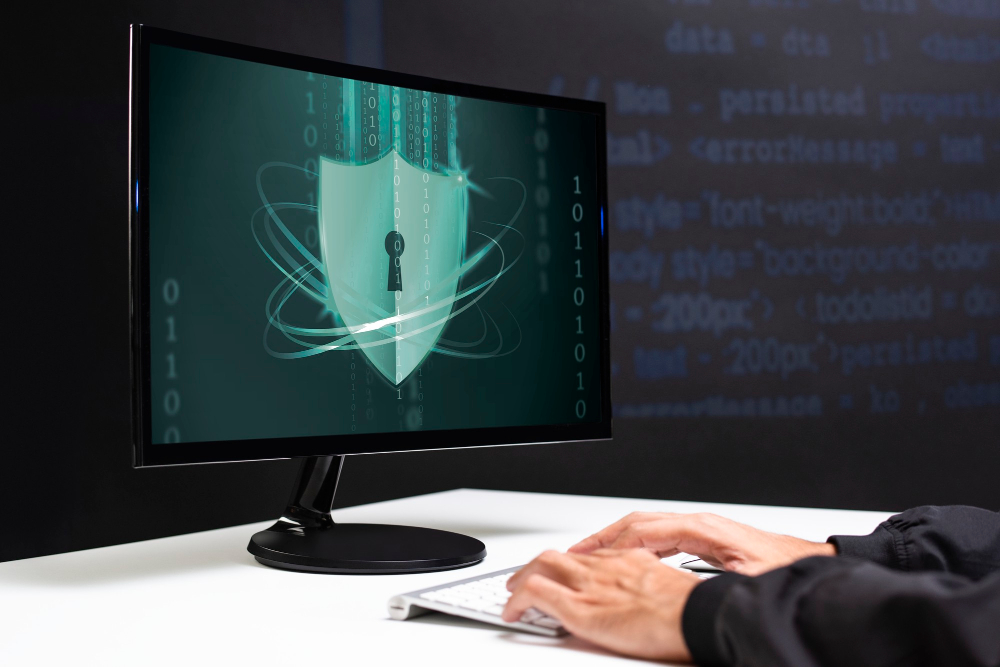Identity theft and fraud have become pressing concerns in the digital age, where personal data is a valuable commodity. Cybercriminals use various methods to steal sensitive information, such as Social Security numbers, bank details, and login credentials, to commit fraudulent activities. Ensuring your PC is secure against these threats is crucial to protecting your financial assets, privacy, and peace of mind. Here’s a comprehensive guide to safeguarding your PC against identity theft and fraud.
Understanding Identity Theft and Fraud
Identity theft occurs when someone illegally obtains and uses your personal information for financial gain, often leading to significant personal and financial consequences.
Common Methods of Identity Theft
- Phishing: Fake emails or websites trick users into providing personal information.
- Spyware and Keyloggers: Malicious software captures your keystrokes or monitors your online activity.
- Data Breaches: Hackers target companies or organizations to steal user data.
- Public Wi-Fi Exploits: Cybercriminals intercept data transmitted over unsecured networks.
- Social Engineering: Manipulating victims into divulging sensitive details.
Steps to Secure Your PC Against Identity Theft
1. Use Strong and Unique Passwords
Weak passwords are a primary vulnerability for many users.
- Create passwords with at least 12 characters, including upper and lower case letters, numbers, and special symbols.
- Avoid using easily guessable information like birthdays or pet names.
- Use a password manager to generate and store complex passwords securely.
2. Enable Two-Factor Authentication (2FA)
Adding an extra layer of security to your accounts significantly reduces the risk of unauthorized access.
- Enable 2FA for all critical accounts, such as email, banking, and social media.
- Use app-based authenticators like Google Authenticator or biometrics instead of SMS-based codes.
3. Install and Update Antivirus Software
Antivirus software is essential for detecting and removing malicious programs.
- Choose a reputable antivirus solution with real-time protection.
- Schedule regular scans to detect spyware, malware, and other threats.
- Ensure automatic updates are enabled for the latest threat definitions.
4. Secure Your Internet Connection
Unsecured networks make your PC vulnerable to attacks.
- Use a VPN (Virtual Private Network) to encrypt your internet traffic, especially on public Wi-Fi.
- Ensure your home Wi-Fi network uses WPA3 encryption and change the default router credentials.
- Disable remote access to your router unless necessary.
5. Avoid Phishing Scams
Cybercriminals use phishing techniques to steal sensitive information.
- Double-check email addresses and URLs for authenticity.
- Avoid clicking on links or downloading attachments from unknown sources.
- Use anti-phishing browser extensions and security tools.
6. Regularly Update Your Operating System and Software
Outdated software often contains vulnerabilities that hackers exploit.
- Enable automatic updates for your operating system, applications, and browser plugins.
- Keep security patches up-to-date to stay protected against the latest threats.
7. Use Encryption to Protect Sensitive Data
Encryption ensures that even if your data is accessed, it cannot be read without the proper decryption key.
- Encrypt sensitive files on your PC using tools like BitLocker (Windows) or FileVault (Mac).
- Use encrypted storage devices for additional security.
8. Monitor Your Financial and Personal Accounts
Keeping an eye on your accounts helps you detect suspicious activities early.
- Set up alerts for transactions on your bank and credit card accounts.
- Regularly check your credit reports for unauthorized activities.
- Consider using identity theft protection services for added security.
9. Avoid Oversharing on Social Media
Cybercriminals often gather information from social media profiles to commit identity theft.
- Limit the personal information you share publicly, such as your address, phone number, or family details.
- Adjust your privacy settings to control who can view your content.
10. Use Secure Browsers and Extensions
Secure browsers and extensions enhance your online safety.
- Use browsers with built-in privacy features, like Mozilla Firefox or Brave.
- Enable HTTPS-Only Mode to ensure your data is transmitted securely.
- Add extensions like ad blockers and anti-tracking tools to prevent malicious ads and scripts.
Advanced Security Measures
1. Enable Multi-Account Privileges
Use separate accounts for administrative tasks and daily usage.
- Operate your PC with a standard user account for everyday tasks.
- Use the administrator account only for installing software or making significant changes.
2. Disable Unnecessary Features
Features like file sharing or remote desktop access can expose your PC to risks.
- Disable these features if not in use.
- Regularly review and manage your PC’s active services and applications.
3. Perform Regular Backups
Backing up your data ensures recovery in case of an attack or system failure.
- Use both cloud-based and external storage solutions for redundancy.
- Schedule automated backups to avoid manual errors.
4. Educate Yourself on Cybersecurity
Staying informed about the latest threats and security practices is vital.
- Take online courses or attend webinars on cybersecurity.
- Teach family members, especially children, about safe online practices.
What to Do If You Suspect Identity Theft
1. Act Quickly
Time is critical when dealing with identity theft.
- Immediately change passwords for all affected accounts.
- Freeze your credit to prevent unauthorized access to your financial records.
2. Report the Incident
Notify relevant authorities and organizations about the breach.
- Contact your bank or credit card provider to report suspicious transactions.
- File a complaint with your country’s cybercrime division.
3. Seek Professional Assistance
Identity theft protection services can help mitigate the damage and prevent further issues.
Conclusion
Securing your PC against identity theft and fraud requires a proactive and multi-layered approach. From using strong passwords and enabling two-factor authentication to educating yourself about cybersecurity, every measure plays a vital role in protecting your digital identity. By staying vigilant and employing best practices, you can minimize risks and ensure a safer online experience.







